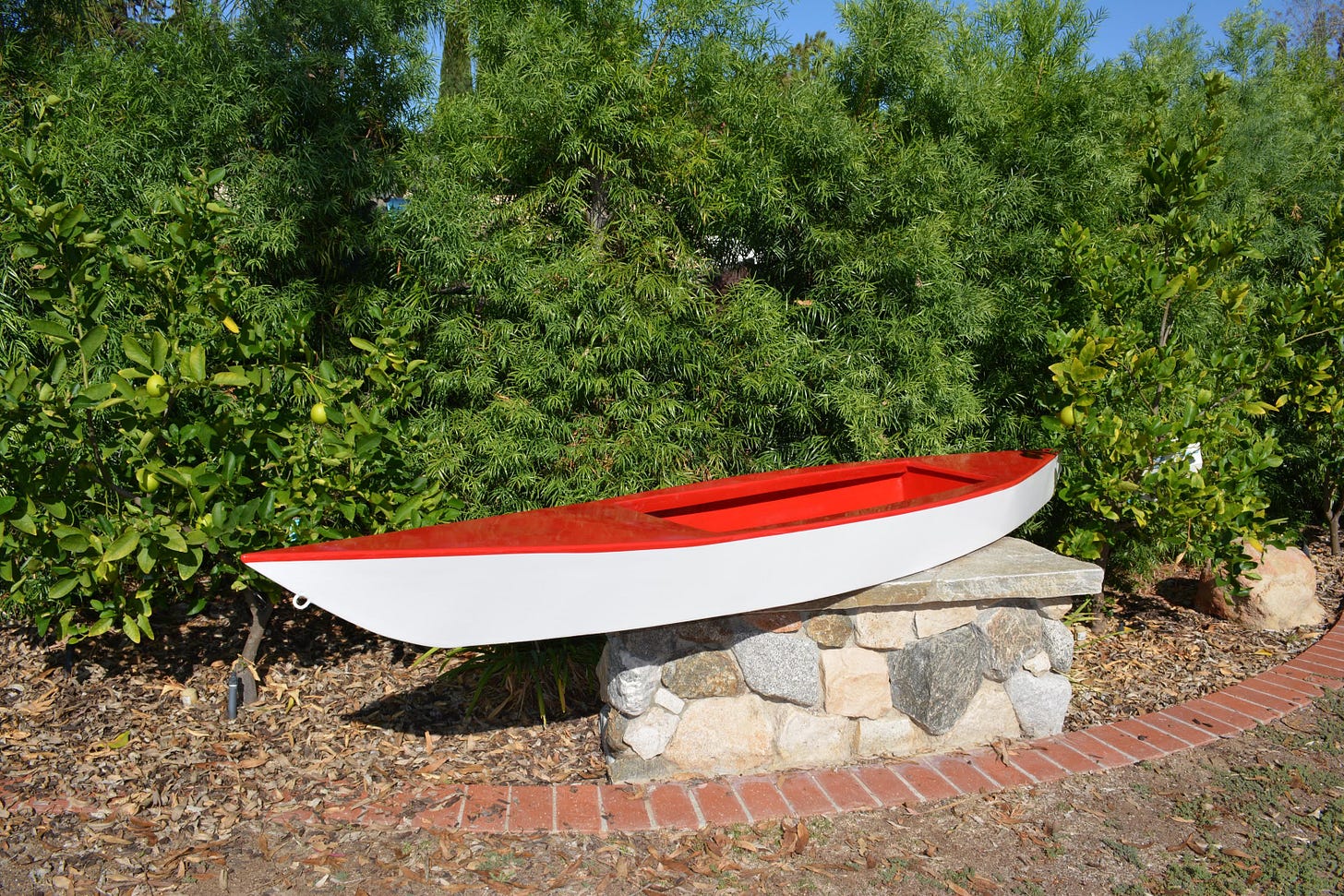What are you building in there? Are you building from scratch? From a kit? Restoring an old boat to its former glory? Readers love to see photos of projects under progress—even the inside of other builders’ shops. Send us a quick photo and description to josh@smallcraftadvisor.com

Also, we just received a question from a first-time boatbuilder asking what tools are required, and what tools are optional-but-suggested, for his build of a small plywood boat.
This article from Small Boat School offers this detailed list and a video explanation.
But what about addtional tools—maybe those not absolutely necessary, but ones that make the job easier or more efficient? Share your list below. —Eds




The Shinto saw file has both coarse and fine sides for shaping wood and is great for removing epoxy drips and runs.And it will save your good rasps for fine work.
The Bahco carbide scraper is a great tool for cutting down epoxy drips, and fiberglass overlaps. It works on paint and varnish too. Make sure to buy convex blades for replacements. They prevent the corners from digging in. The blades can be resharpened if you have a diamond hone.
A 3 foot folding ruler was very handy.
Rubber contour sanding pads come in handy for smoothing epoxy fillets.
Blue painters tape has lots of uses holding things temporarily , marking locations, making patterns,
drill bit depth stops, etc.
For removing screws with damaged heads. I use Un-Screw-Ems from T&L Tools. Work great when you damage Phillips head SS sheet metal screws commonly used by home builders because they are cheap and readily available.
For all except the smallest boats, a five or 6 inch random orbit disc sander saves a lot of time and energy. A connector for dust extraction by your shop vac is strongly recommended.
The small bevel gauge by Harry Bryan is very useful in tight spaces, and it’s fun to make.
When it comes time for rigging your boat you’ll probably want to make some eyesplices. If you’re using double braid rope a Brian Toss splicing wand will be very helpful. Other type fids may work, and the splicing wand is expensive but for small diameter rope I found the splicing wand much easier.
Four inch foam paint rollers for applying finish prior to tipping out with a good brush make a smooth finish easy and fast.
a 10.5 x 16' Shed! - ahh but there is more - the 7' wide door permits a 1974 Force5 to be dollied in and hung on the back wall! Finally her hull and topside covers can come off, she can breathe! Maybe she'll no longer be angry at her ILUR cousin that has been comfortably in the garage all this time